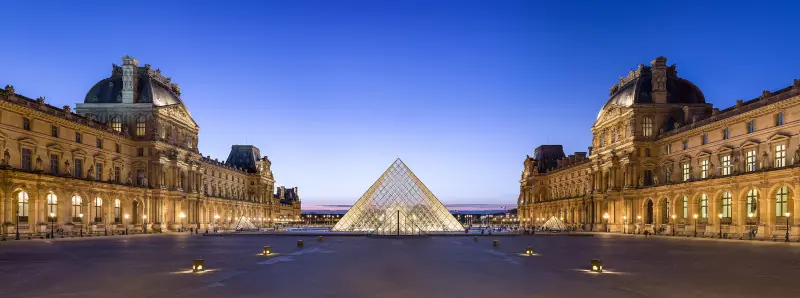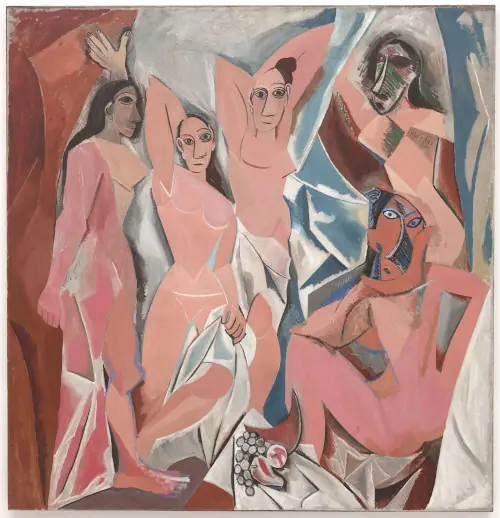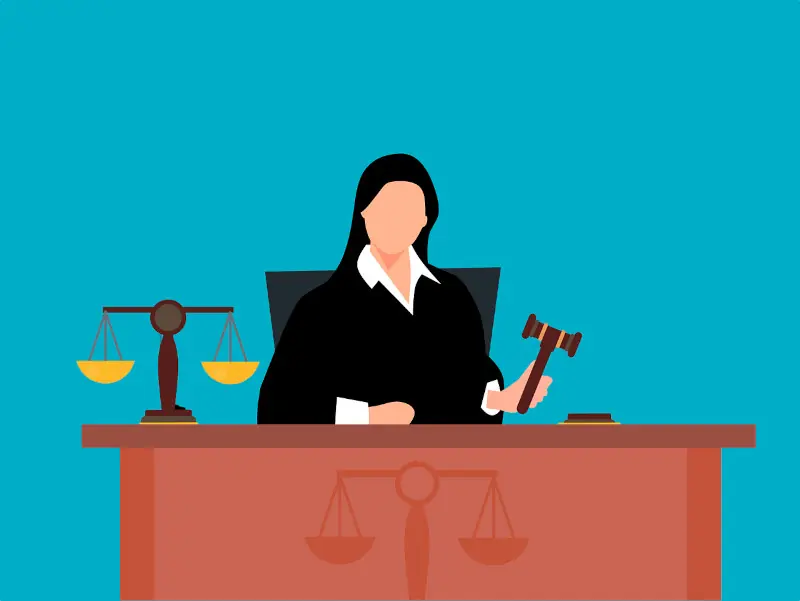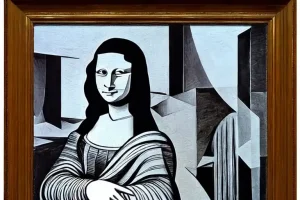Pablo Picasso was recognized by many as one of the 20th century’s most influential artists. But there was a time when he was suspected of stealing the famous Mona Lisa painting by Leonardo da Vinci. Is it true that he stole this timeless masterpiece? What happened during this time, and how did Picasso get involved in such a crime?
The Mona Lisa was not stolen by Pablo Picasso. Judge Henri Drioux determined Picasso and Apollinaire had no involvement in the theft and claimed that the police had abused them to provide two leads in the case. Persuaded by their dramatic testimony, Drioux dropped the case with a warning.
The Mona Lisa, presumed lost forever, showed up two years later inside a trunk in a Parisian apartment a mile from the Louvre. Read on to learn more about the journey of the once-lost yet ultimately found painting and Picasso’s trial.
Background of the Theft
Table of Contents
One Tuesday morning, Artist Louis Beroud arrived to paint a copy of the Mona Lisa. The moment he got there, he found a space on the wall. Béroud called a sleepy old guard, asked where the Mona Lisa was, and remarked that it was gone from its place.
The Mona Lisa, it turned out, was missing, but the guard thought it was taken for a photograph. He went into the gallery and observed the vacant spot. Everyone imagined that it was being photographed since the Louvre had just erected a picture studio — and in 1911, when this was happening, photographing artworks was still a highly novel and exciting concept. [1]
However, upon searching the 1000 rooms in the museum, the museum security team didn’t find anything. They searched the whole institution but could not locate the painting. The police were then contacted once the alarm was sounded.

The French government closed the borders, and newspapers began offering tens of thousands of Francs for information. Every vehicle entering the country from the east was inspected.
Police were tipped off that other items had also been stolen from the Louvre. Honore-Joseph Géry Pieret, secretary of poet and writer Guillaume Apollinaire, an associate of Picasso, claimed that he had stolen little Iberian statues from the Louvre and sold them to Picasso, which is how Picasso’s name came to be associated with the crime. [2]
How Did Picasso and His Friends Get Involved?
One of Picasso’s friends, Géry Pieret, knew he liked ancient Iberian sculptures. In 1906, Pablo Picasso saw Iberian art for the first time at the Louvre. It can be noted that Picasso’s works thematically or formally align with Iberian art’s traits, subjects, and methods. [3]
Years prior, Pieret went to the Louvre and took some Iberian art since it needed to be better guarded and was rendered unimportant. Picasso bought the two statues for 100 francs or 50 francs a piece. Picasso used one of the sculptures’ faces when he painted Les Demoiselles D’Avignon.
Les Demoiselles D’Avignon was created at a transition point in Picasso’s career. Discover the full range of Picasso’s abilities on a journey through his major art periods.

Some of Picasso’s other artworks that feature Iberian art include:
- Self Portrait, 1906
- Toro Echado
- Tête Féminine
Pieret was struggling for money and went to steal more from the Louvre. He continued getting more and more small objects from the museum and selling it afterward.
After the infamous theft of the Mona Lisa, Pieret told the newspaper that Picasso owned stolen statues from the Louvre to collect the reward money offered by newspapers. Picasso and Apollinaire, a fellow artist also possessing stolen art from Pieret, were afraid they would be accused of stealing the Mona Lisa, so they first tried throwing the small statues into the river Seine. They ultimately decided against carrying it through and instead gave them to a newspaper editor.
In the end, Picasso and Apollinaire were arrested and were set to appear in court. Apollinaire admitted to everything, including hiding Pieret, owning works of art that had been stolen, and planning to hide evidence. [4]
What Happened in Picasso’s Trial?
Newspapers exaggerated the story and published that Picasso and Apollinaire were the head of an international group of art thieves. They assert that Apollinaire was an ardent supporter of Picasso’s modernist gang, la bande de Picasso, also called the “Wild Men of Paris” by locals. Police thought this group of art thieves was skilled enough to steal the Mona Lisa. [5]
Both artists appeared before a judge and were hysterical, telling panicked and nonsensical stories and crying. They begged the court’s pardon at various moments. In the end, the judge had enough and correctly deduced that the two had nothing to do with the theft of the Mona Lisa and had no knowledge of its perpetrator. [6]
At one point, Picasso cried frantically and lied that he had never even met Apollinaire while openly sobbing in court. Years later, Picasso recalled being questioned by the court, “Do you know this gentleman?” in an interview. “I have never seen this man,” he replied. He remembered that his face had started losing blood and felt so humiliated.
Police searched the apartment and determined the artists did not steal the Mona Lisa. The loss of the painting had nothing to do with Picasso or Apollinaire. Likewise, no fresh evidence was found during the police search of the poet’s apartment.
Both men were released a few days later. Judge Henri Drioux, who presided over the case, dismissed both individuals with little more than a stern reprimand after being inundated with contradicting and absurd testimony.
Apollinaire is one of the artists depicted in the Three Musicians. Explore the symbolism and meaning in Picasso’s famous Three Musicians Paintings.

How Was the Mona Lisa Painting Returned?
Two years later, the thief identified himself as ‘Leonard’ and sold the painting to an Italian art dealer working on behalf of the Italian government. He said he had only one goal: to return the painting to its original location.
“Leonard” is Vincenzo Peruggia, the Mona Lisa thief. He was betrayed by Mario Fratelli, the art dealer he wanted to sell the painting to for 500,000 lire. Fratelli called in Giovanni Poggi, director of the Uffizi Gallery, and together, they authenticated the painting. They first feigned to support Peruggia’s sale but betrayed Peruggia and covertly called the police. Peruggia eventually entered a guilty plea following a brief trial in Florence and was only imprisoned for eight months. [7]
Before the theft, Peruggia had worked as a repairman on the Mona Lisa’s case in the Louvre. The prosecution referred him to as a house painter when he testified in court in 1914 for the theft of the Mona Lisa. Perugia stood up and identified himself as an artist or pittore.
However, much of Peruggia’s story about how he stole it needs to be clarified. It was said that he waited until the museum closed on Sunday night while hiding in a broom closet, then casually removed the portrait from the wall, tucked it under his coat, and left through the doors where he entered. The fact that Mona Lisa was stolen and then found again helped make her famous worldwide.
Frequently Asked Questions (FAQs)
Initially, when Peruggia was found guilty, he was sentenced to one year and fifteen days in jail. However, his attorneys successfully lowered the sentence to eight months after an appeal.
Despite being defaced frequently, the Mona Lisa has only been taken once by Vincenzo Peruggia, a former Louvre employee motivated by his Italian patriotism. He stole it on August 21, 1911.
References
- “Treasures of the World | Mona Lisa.” PBS, Public Broadcasting Service, https://www.pbs.org/treasuresoftheworld/a_nav/mona_nav/mnav_level_1/missing_monafrm.html.
- Adrian Murphy (Europeana Foundation), “Did Picasso Steal the Mona Lisa?” Europeana, https://www.europeana.eu/en/blog/did-picasso-steal-the-mona-lisa.
- Takac, Balasz. “The Influence of Iberian Art on the Work of Pablo Picasso.” Widewalls, https://www.widewalls.ch/magazine/pablo-picasso-iberian-art-centro-botin.
- Shank, Ian. “When Picasso Went on Trial for Stealing the Mona Lisa.” Artsy, August 1, 2017, https://www.artsy.net/article/artsy-editorial-picasso-trial-stealing-mona-lisa.
- in Art, History | January 9. “When Pablo Picasso and Guillaume Apollinaire Were Accused of Stealing the Mona Lisa (1911).” Open Culture, https://www.openculture.com/2019/01/when-pablo-picasso-and-guillaume-apollinaire-were-accused-of-stealing-the-mona-lisa-1911.html.
- Stone, Sarah. “That Time Pablo Picasso Was Arrested for Stealing the Mona Lisa.” Today I Found Out, August 26, 2019, https://www.todayifoundout.com/index.php/2019/08/time-mona-lisa-stolen-nobody-noticed/.
- Magazine, Smithsonian. “Stolen: How the Mona Lisa Became the World’s Most Famous Painting.” Smithsonian.com, Smithsonian Institution, June 15, 2011, https://www.smithsonianmag.com/arts-culture/stolen-how-the-mona-lisa-became-the-worlds-most-famous-painting-16406234/.
